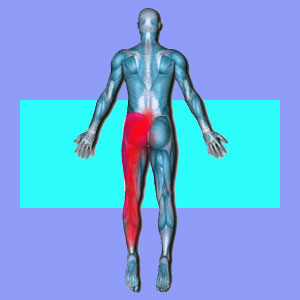
Leg numbness is one of the many possible symptoms of sciatica. Numbness in one or both legs can be caused by a variety of structural conditions, such as foraminal stenosis or spinal stenosis, but can also be enacted by a regional ischemia syndrome, as well as other nonstructural sources. The broad spectrum of possible causative conditions can make correct diagnosis extremely difficult, explaining why misdiagnosis is so prevalent and the treatments for sciatica are often so utterly ineffective.
This educational essay will provide some possible explanations for numbness in one or both legs. We will discuss spinal, nonspinal and nonstructural causes of leg numbness in the lower extremities and help patients to better understand any diagnosis they might have already received.
Leg Numbness from a Spinal Source
When there is a verified spinal reason to explain numbness in the legs, treatment should be easy and straight forward. The condition can usually be rectified through conservative, moderate or surgical measures and the symptoms should disappear. This applies whether the diagnosed source is arthritis, a disc pathology or some irregular spinal curvature or alignment concern.
However, we all know that curative statistics for sciatica are horrific and most patients seldom find lasting relief, even after serious and multiple surgeries. The reason for this occurrence is that many spinal structural diagnostic theories are simply incorrect, or only partially correct, when it comes to creating leg numbness and general sciatica pain.
Many syndromes are incorrectly blamed on a pinched nerve in the lower lumbar or lumbosacral spinal regions, enacted by a herniated disc or osteoarthritic bone spur complex. While these issues are very common and are easy to visualize during diagnostic imaging studies, they are sometimes not the actual source of pain and numbness, although they can be in rare instances.
Spinal stenosis sometimes creates a variety of lower body problems, including numb legs, but may exist much higher up in the spinal column and is not always diagnosed as the cause, leading to inappropriate treatment for a mistakenly identified structural issue.
In some dire instances, the true cause of lower body numbness may be correctly ascertained, but the condition is difficult to treat successfully, such as in the scenarios of extreme spinal curvature.
In other situations, the diagnosis is right, but the care provider enslaves the patient into symptomatic care, which will never cure the underlying causation of the numbness. This is far more prevalent than most patients ever know and is done mostly for ongoing financial gain. After all, a cure would deprive the doctor of a client, while continuing pain, requiring continuing care, is a long-term money-maker.
Numb Legs from Nonstructural Processes
True objective leg numbness, which is the complete lack of feeling and even some motor functions, is more likely to be generated by a spinal nerve root compression issue. Subjective numbness, which is the partial loss of feeling or functionality, is usually nonstructural, although it can also be caused by structural issues in less common circumstances.
Oxygen deprivation sciatica is one of the more logical sources of chronic lower back and leg paresthesia, but is seldom correctly diagnosed by care providers. This is a condition I know well, since it was the reason for my seemingly eternal suffering during much of my young adult life. My pain, like many of you, was blamed on 2 herniated lumbar discs, and although these abnormalities existed in my spine, they were not the real source of any symptoms at all. It took me 18 years to find this out and this is time I dearly miss. Do not make the same mistake. It can cost you years or even decades of your life.
Other nonstructural causes of leg numbness might include various types of regional neuropathy, muscular compression concerns, disease processes and circulatory problems. Always be sure to rule out all these scenarios before seeking treatment for any diagnosed spinal abnormality.
Leg Numbness Analysis
Complete numbness can be sourced by irregularities in the spine or a number of other potential serious health conditions. All numbness complaints should always be reported immediately to your physician. However, subjective numbness, especially in the presence of tingling and pain is rarely sourced by a purely anatomical issue. More likely, the pain is part of a devious mindbody syndrome which has plagued you for years, changing symptoms and severities often. Chronic pain of any sort without clearly defined explanation often fits this profile.
In order to overcome numb legs and feet, lower body pain and other neurological effects, like tingling and weakness, a proper and accurate diagnosis is a must. Without it, you will be on an eternal fool’s errand in search of a cure for a condition which may not even be responsible for your agony. This was my reality for almost 2 decades and I beg you not to repeat my error.
Be sure to consider all possible sources of numbness to get the most from your treatment attempts and enjoy symptomatic resolution quickly and completely. Your neurologist can help in this regard and patients with sciatica are always advised to allow a neurology professional to head up their diagnostic and treatment team.





